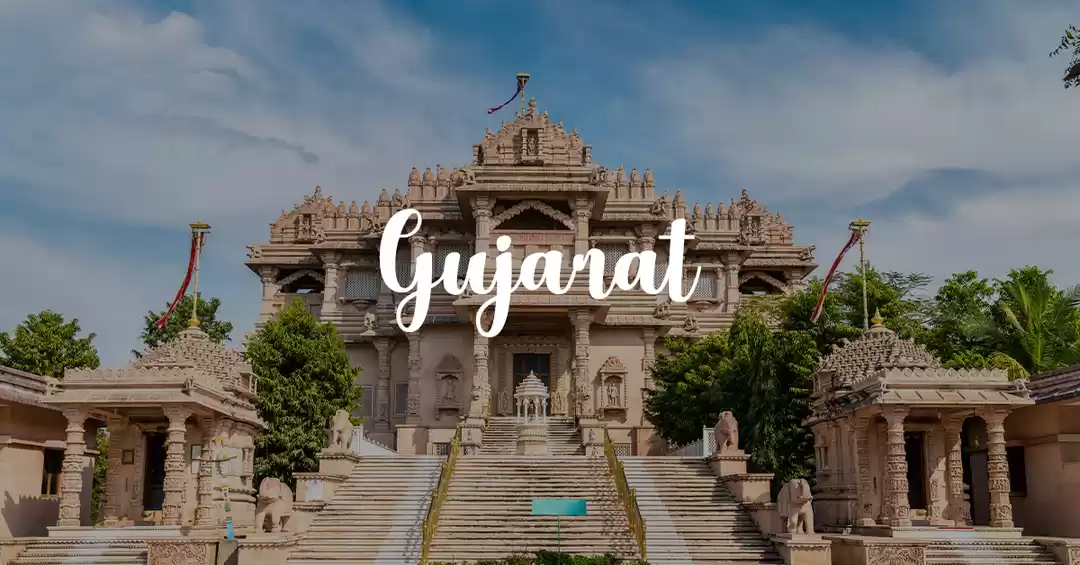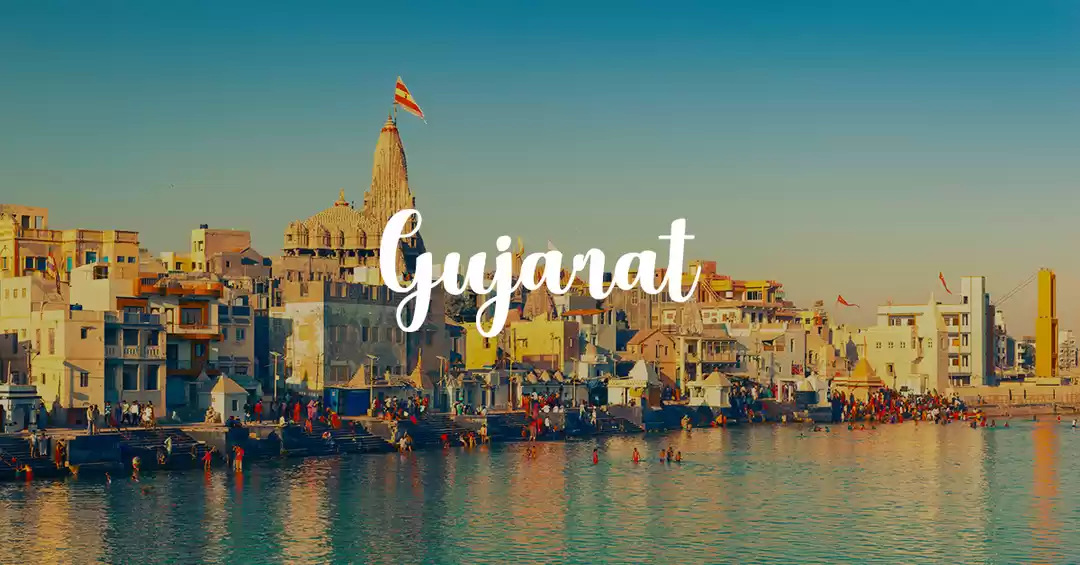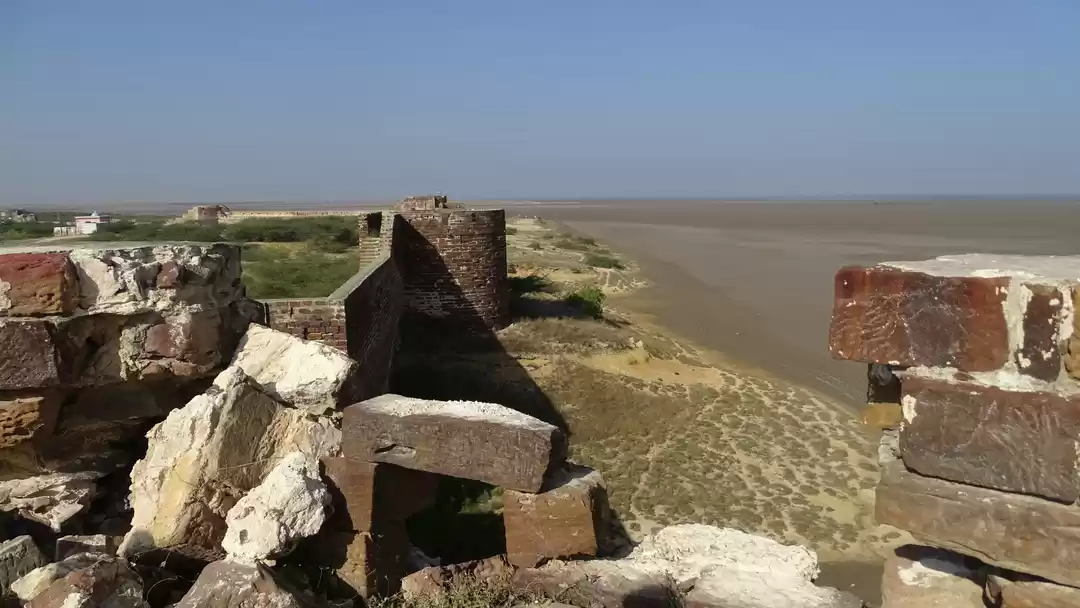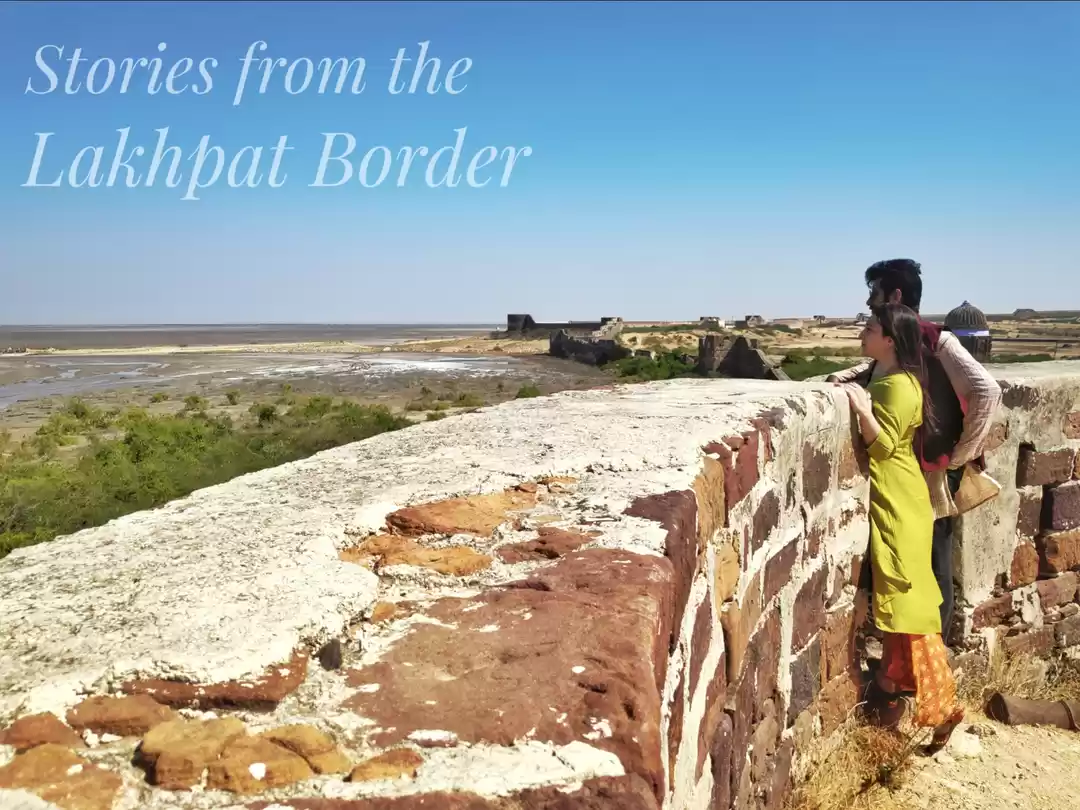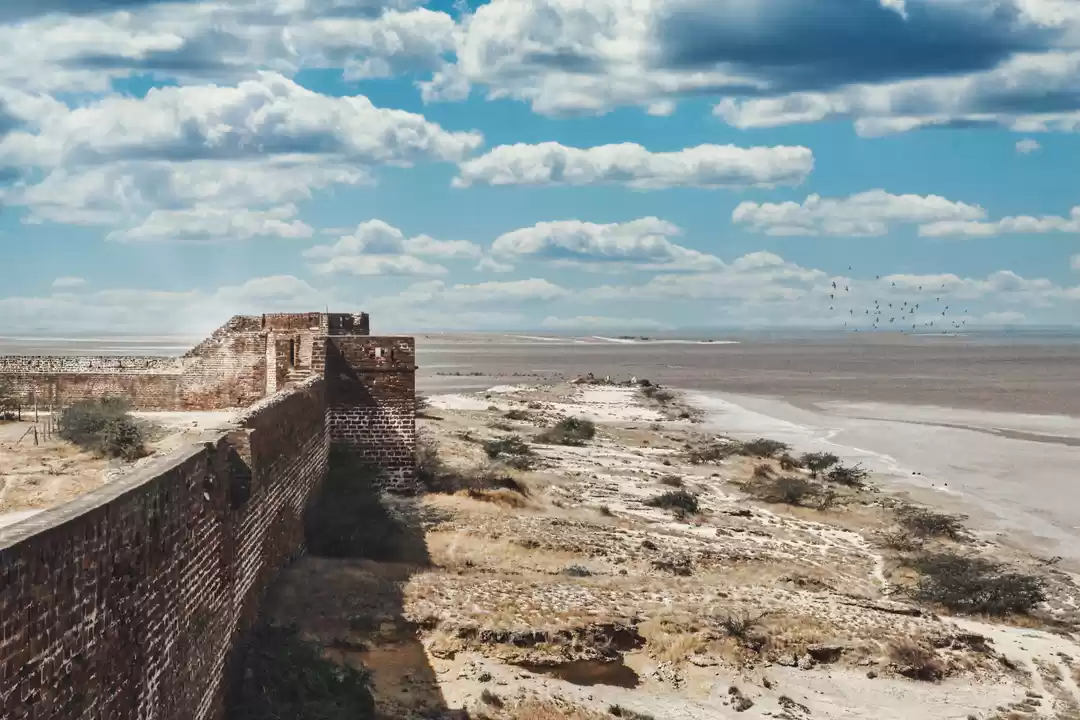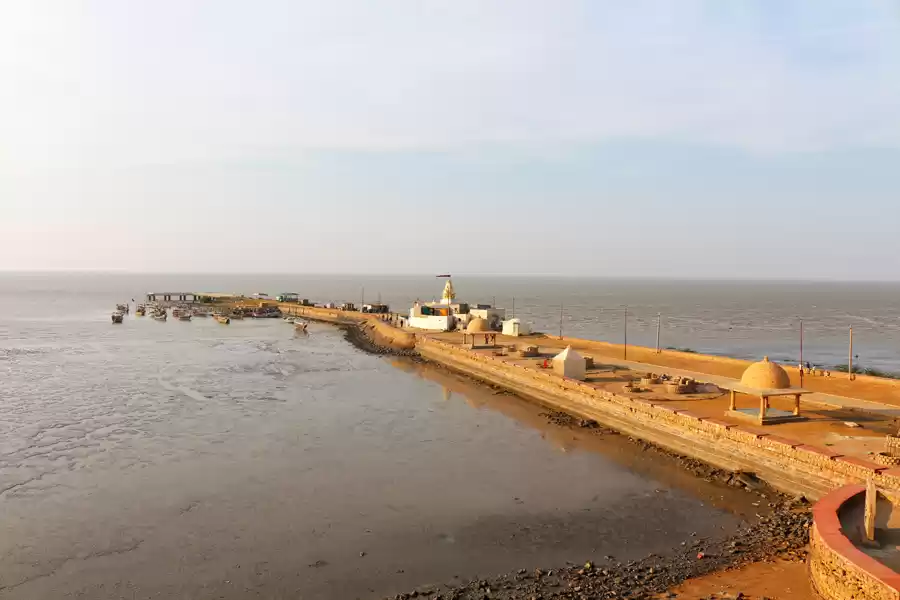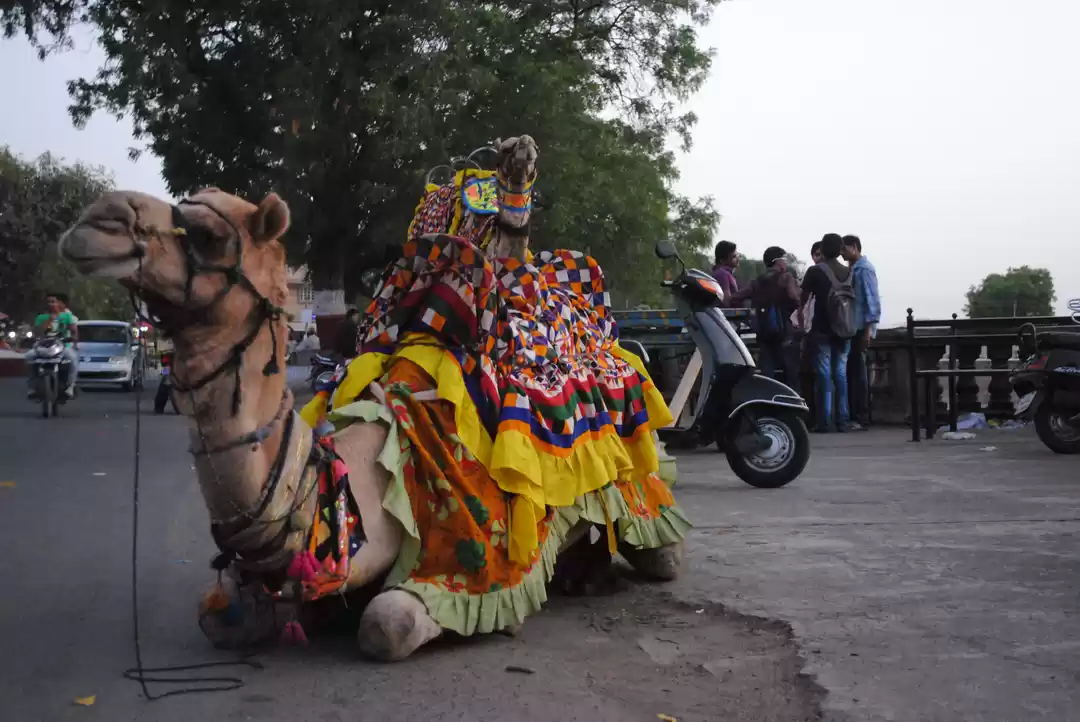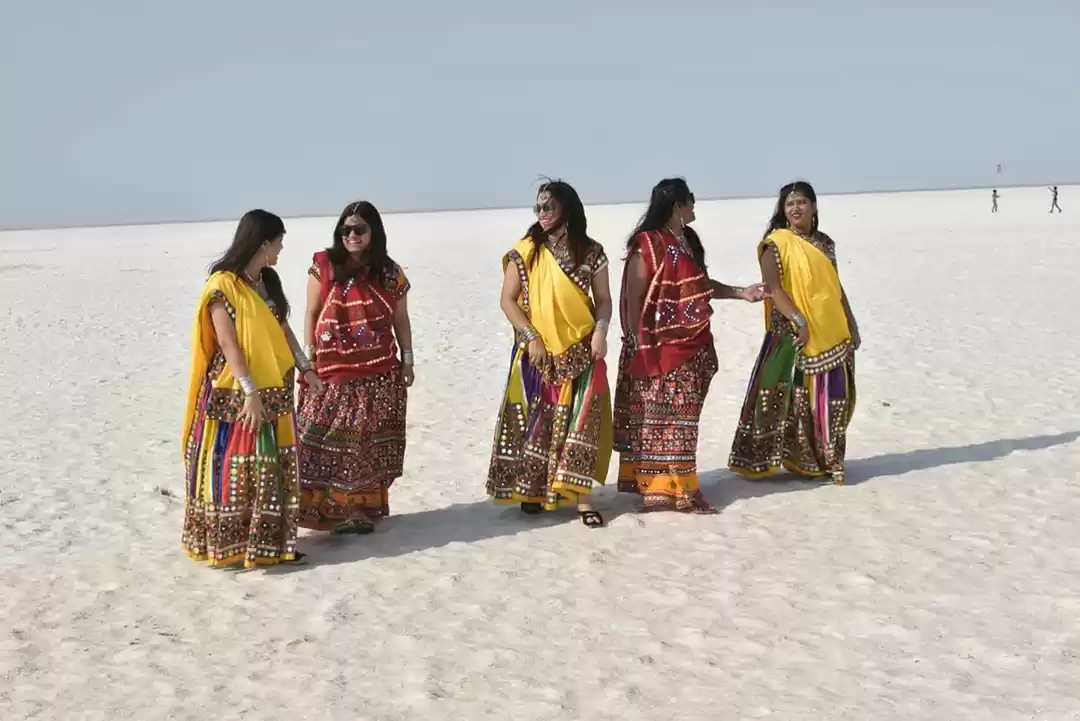
There are many places and towns in the world who have a glorious past but now they are deserted. Lakhpat is one of such places in Gujarat. On the third day of our Kutch trip in the month of December we went there. This was the longest road trip from Bhuj, but we enjoyed a lot due to the interesting places and pleasant weather. We also included nearby Narayan sarovar with this trip.
Lakhpat is a fortified town with high walls and bastions made from hard stone. The fort wall is almost 7 KM long with 4 gates and 2 windows. The fort walls which were erected in 1801, are still nearly intact, and offer spectacular views over the vast Rann. The first thing that you will experience after reaching here is isolation. It is one of the most remote habitats in Gujarat at the mouth of Kori Creek near the Pakistan border.

History of Lakhpat
In ancient times, the river Indus and its subsidiary streams fell into the sea after passing through Lakhpat town in Kutch region. Lakhpat used to be a rich rice growing area and was also a popular port. This port was used for trading goods from as far as Multan to Indian ocean countries. Lakhpat was very rich and prosperous city derives its name from the prosperous maritime trade which generated a daily income of 100000 Koris. The Annual tax income from rice cultivation alone was 800000 Koris.
Another legend says that the city was inhabited traders who were “lakhpatis” (Millionaire in today’s term) and tax collection was in Lakhs, so it’s called Lakhpat. According to another legend, the town was founded by Rao Lakha, so it was known as Lakhpat.
Lakhpat town is there from centuries and some form of wall was also there but the fort wall seen today was erected and expanded in 1801 by Wazir Fateh Muhammed. The work on fortification started in 1801 and finished in 1807. Lakhpat used to be rice growing area and was a popular port till the Earthquake of 1819 AD. After this earthquake Indus river changed its course and start flowing further north west. The whole area became barren and cultivation stopped due to lack of water. Lakhpat lost its importance as a port town.

After visiting the Mata No Madh, we reached fort Lakhpat around middle of the day. The road from Naktrana to Lakhpat was in good condition. The first glimpse of the fort entrance gate from the road is a small gate on the road just inside the walls. This gate is known as the Bhujvaro nako. In olden days Camel caravans used the gate for transporting the goods to Lakhpat port for further shipping. Along with the gate there was a toll booth to collect tolls and customs from traders before they were allowed inside town. The original Bhujvaro nako was collapsed in 1819 earthquake which was rebuilt later.
After entering the fort, we went straight and the first thing visible was Lakhpat Gurdwara Sahib. The status of this Gurudwara is Gurdwara Pehli Patshahi meaning the “Gurdwara of the first master”. This Gurdwara is associated with Guru Nanak Dev Ji and a sacred place for the Sikhs.

ln early 16th century, Guru Nanak Dev ji stayed here 40 days during his second and fourth missionary journeys (Udasis) in 1506-1513 AD and 1519-1521 AD respectively on his journey to Mecca. In those days Lakhpat was a working port town and Guru Nanak Ji crossed from Lakhpat to Somiani port (Pakistan) for his onward journey to Mecca and medina in Saudi Arabia. His wooden ‘khadau’ or ‘Charan paduka’ is preserved here by Gurudwara committee.
Lakhpat Gurudwara Sahib is the only place in this deserted town where visitors can get food. We reach there around lunch time and we were hungry. Few people who were busy there in some construction activity halted their job and offered us “lunger”(food) with wide smile.

Though “lunger” is a community service and food is offered to everyone for free but you should donate some money to the Gurudwara so that other peoples and fellow travelers can also be fed. In the entrance hall reception table, you can find the donation book. Nobody is there to collect the donation from you. Whatever you wish to donate keep it inside the register and write the donation slip yourself.


After having lunger in Gurudwara we went straight to the north western side of the fort walls. Fort walls are easy to climb with stairs at many locations. You can still find canon left in the bastion. There was a gate in the North side of fort wall which in my opinion was the river side entry for bringing in goods and people inside the town. There was some construction going on near this gate which look like a resort for promoting tourism in this area. Fort wall and all other attractions inside Lakhpat fort can be visited from your car.


What to see in Lakhpat
Other than the Lakhpat Gurudwara Sahib the other things you can see at Lakhpat are
Fort Wall
The most popular attraction at the Lakhpat fort is the fort wall which you can climb at many places. Once you are on the fort wall you will be greeted with a spectacular view over the expansive Great Rann till horizon. Its best place for photography inside the fort.


Pir Ghaus Muhammad tomb
Pir Ghaus Muhammad, a Sufi saint, who practiced half as a Hindu and half as a Muslim, is also buried here in Lakhpat. His tomb is a stone construction on a high plinth which is octagonal in shape with four side doors and very complex carvings. There is a water tank opposite the tomb that is said to have healing properties for skin problems.
Sayyed Pir Shah Dargah
Sayyed Pir Shah’s dargah is just opposite side of the fort from Pir Ghaus Muhammad tomb. It is a nine domed mausoleum with intricate carving.
The journey to Lakhpat fort is very long even if you are staying in the nearby town of Bhuj. Even after long traveling hours, every soul will be satisfied after visiting Lakhpat.
How to reach Lakhpat Fort
There are only two bus service every day from Bhuj by Gujarat State road transport. These buses are for serving the villages en route and they take long time. The best option is to hire a car for full day. This is most comfortable option and save you a lot of time. You can include some nearby attractions like Narayan sarovar and Mata no Madh which are on the way to fort Lakhpat. Car rental in Bhuj starts from Rs 2500 for a small car with 250 KM. Additional KM is charged at Rs 9. Distance between Bhuj and Lakhpat is approx. 135 KM.
Best time to visit
Best time to visit Lakhpat is from November to March when is weather is slightly cool. Rest of the year its very hot and not enjoyable.
Where to Stay
Lakhpat is a deserted town with no Hotel, restaurant or even a tea stall inside the fort wall (just at the fort entrance I found one tea stall which was first and last shop I have seen there). Lakhpat Gurudwara is the only place in this town where you can find an accommodation. Gurudwara is not charging anything for your stay but you should donate whatever amount you like. Nearest resort of Gujarat tourism is at Narayan Sarovar.





